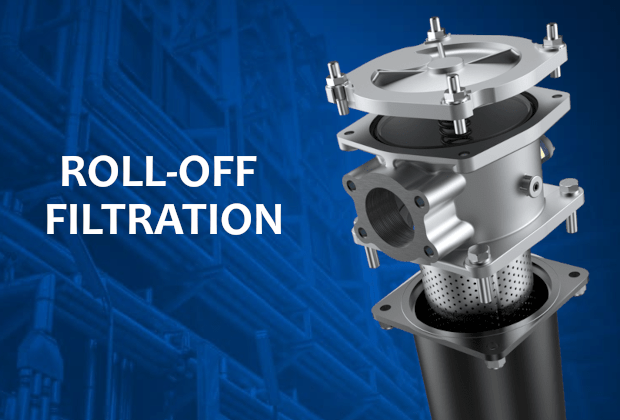
In this month’s post we will delve into Roll-off filtration, which is done when a new machine leaves the production line or when a vehicle is repaired or reconditioned.
The assembly of a machine is one of the most critical activities for cleaning the equipment itself and the hydraulic systems, as the various components, not yet assembled, are subject to various forms of contamination, determined both by the environment and by the assembly operations.
It is desirable to assemble any component or system with clean parts in a controlled manufacturing environment. However, this may not be possible. Therefore, it is necessary for the entire hydraulic system to undergo a cleanup process after the final assembly to reach the desired roll-off cleanliness level.
What are the main sources of early-life contamination of a machine?
Typically, at the beginning of the machinery life cycle, the main sources of contamination can be characterized as:
‘Built-in’ – is the contamination left in the system or in componentry during initial vehicle assembly or vehicle repair/re-build, resulting from any processing such as welding remains, dust, cleaning rag fibers, paint residues and others potentially abrasive particles; many of these particles are invisible to the human eye but are potentially extremely harmful to the system.
‘Brought-in’ – is the contamination resulting from ‘supplied’ components, that are manufactured off-line/off-site, but also from the fluid itself, and can therefore increase the overall levels of contamination of the vehicle during assembly or during repair and rebuild operations.
The main purpose of “roll-off” cleaning therefore consists in intercepting the contaminating particles introduced during the machinery construction process to minimize damage to the various components of the system at the beginning of their life.
Indeed contamination causes premature wear and lost efficiency which can result in catastrophic failure.
Proper roll-off cleanliness procedures protect equipment in its infancy and provide for fewer warranty claims. The end-customer is provided with a high-quality system with clean components that meet his initial use needs.
What are the main roll-off cleaning methods?
There are many ways to clean a system early in its life cycle: the ultimate goal is to reach the desired cleanliness level at the most reasonable cost and minimum time interval.
The most popular methods to achieve this result are basically 3:
- Let the system run through its normal operating cycle and allow the filtration system filter to clean the fluid. The system in this case operates at low pressure during the cleaning/flushing process. The main advantage of this method is the simplicity, as the operator uses the filters already present in the system, without resorting to ad hoc filtration systems. However, this first flushing phase may require the use of several filter elements to remove the initial contamination. This method may also damage system components if the initial contamination level is too high.
- Use an external filtration trolley, sometimes referred to as kidney loop. This mobile, self-contained unit filters the fluid off-line using its own pump, motor and filter. It operates at a low pressure. The best way to use this device is to attach its suction and return hoses to the reservoir with fluid fittings and let it run while the system is running at a low pressure. Oil returning to the reservoir from the return line will be filtered through the filtration unit. This off-line process supplements system filters and decreases cleanup time.
- Design an off-line filter that can be attached to the system at system pressure. It can be connected to the system in such a way that it becomes the power supply. The equipment can be cycled using hydraulic power from the off-line system. This solution is the most flexible one, as the filter can be excluded for the replacement of the element without interrupting the operations of the system. In addition, offline filters can use elements with different degrees of efficiency to remove the contaminant and reach even very low ISO cleaning levels, which otherwise would not be achievable.
Roll-off cleaning, however, is only the starting point for trouble-free system operation. The final responsibility in controlling contamination lies with the user, that must maintain proper filtration and constant contamination control in the system to keep the hydraulic fluid clean.
For any further information and in case of any doubt regarding the best solution for your system requirements, please contact our Sales Team.